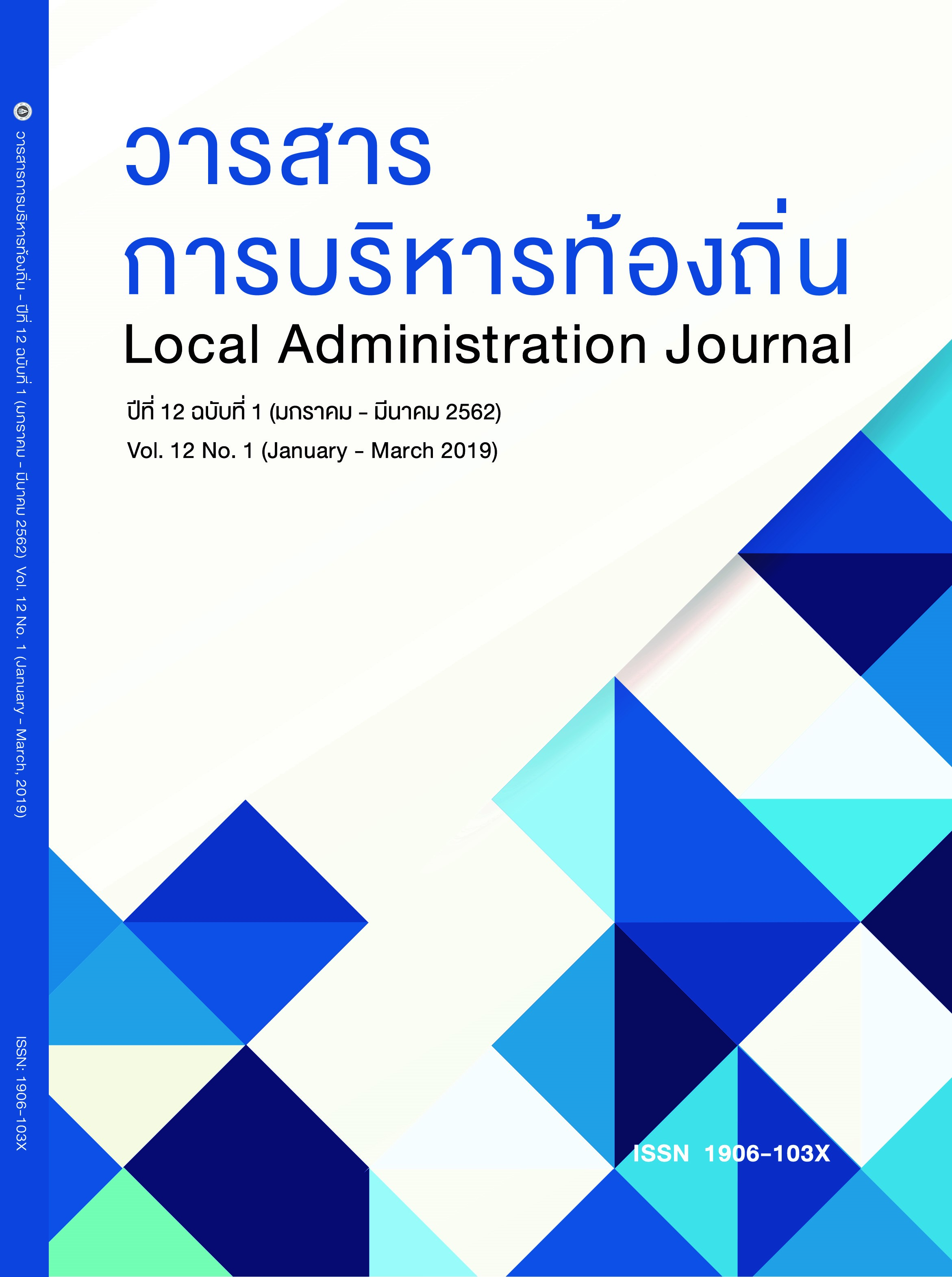The The Review of Thailand’s Eastern Economic Corridor: Potential and Opportunity
Keywords:
Eastern Economic Corridor (EEC), documentary research, social constructivist, foreign direct investmentAbstract
This paper aims to review the context of the Thailand’s Eastern Economic Corridor and analyze the potential of Thailand to attract the international investments using documentary research strategy. The value of method is illustrated through an analysis of investment attractiveness and potential rooted from international business paradigm. Extant literature is outlined regarding interpretivist philosophy underpinnings of the documentary method and is followed by an explanation of the method and its application. Findings are drawn from a constructionist approach where the documentary method can add to the development of foreign direct investment framework and Thailand’s potential by providing rich descriptions of actual practice, problems and issues in the EEC.
References
Ahmed, J. U. (2010). Documentary research method: New dimensions. Indus Journal of Management & Social Sciences, 4(1):1-14 (Spring 2010)
Asian Development Bank (ADB). (2013). What Is Economic Corridor Development and What Can It Achieve in Asian Regions? (OREI Working Paper 117). Manila.
Aliber, R. Z. (1983). ‘Money, multinationals, and sovereigns’, in C. P. Kindleberger & D. B. Autretsch (eds.), The multinational corporation in the 1980s, pp. 245-259, Cambridge: The MIT Press.
Bailey, K. (1994). Methods of social research, 4th edition, New York: The Free Press.
Blaxter, L., et al. (1996). How to research, Buckingham: OUP.
Bogdan, R.C. and S.K Biklen. (1992). Qualitative research for education: An introduction to theory and methods. Boston: Allyn & Bacon.
Bowen, G. A. (2009). Document analysis as a qualitative research method. Qualitative Research Journal, 9(2), 27-40.
Bryman, A. (2012). Social research methods, Oxford: Oxford University Press.
Chandler, A.T., Tharapha, F., and Gulthawatvichai, S. (2018). Thailand: Eastern Economic Corridor investment. International Financial Law Review. Website: http://www.iflr.com/Article/3821033/Thailand-Eastern-Economic-Corridor-investment.html
Creswell, J. W. (2007). Qualitative enquiry and research design: Choosing among five approaches. (2nd ed). Thousand Oaks. CA: Sage Publications.
Creswell, J. (2009). Research design: Qualitative, quantitative, and mixed methods approaches. Los Angeles: Sage Publications.
Crotty, M. (1998). The foundations of social research: Meaning and perspective in the research process, London: Sage Publications.
Du, X., & Lai, S. (2018). Financial distress, investment opportunity, and the contagion effect of low audit quality: Evidence from China, Journal of Business Ethics, 147(3), 565-593.
Dunning, J. H., & Narula, R. (1993). Transpacific foreign direct investment and the investment development path: the record assessed, Columbia, SC: Center for International Business Education and Research, Division of Research, College of Business Administration, University of South Carolina.
Dunning, J.H. (2000). The eclectic paradigm as an envelope for economic and business theories of MNE Activity. International Business Review, 9(2), 163-190.
Guba, E. G., & Lincoln, Y. S. (1994) ‘Competing paradigms in qualitative research’, in N. K. Denzin & Y. S. Lincoln (eds.), Handbook of qualitative research, pp. 105-117, Thousand Oaks, CA: Sage Publications.
Kindleberger, C. P. (1969). ‘The theory of direct investment’, in C. Kindleberger (ed), American business abroad, New Haven, CT: Yale University Press.
Maniam, B., & Chatterjee, A. (1998) The determinants of US foreign investment in India: Implications and policy issues, Managerial Finance, vol. 24, no. 7, pp. 53-62.
Miles, M. B., & Huberman, A. M. (1994). Qualitative data analysis: An expanded sourcebook, Thousand Oaks, CA: SAGE Publications.
Mogalakwe, M. (2006). The use of documentary research methods in social research, African Sociological Review, 10(1), 221-230.
O’Leary, Z. (2014). The essential guide to doing your research project (2nd ed.). Thousand Oaks, CA: SAGE Publications, Inc.
Payne, G., & Payne, J. (2004). Key concepts in social research, London: Sage Publications.
Pettinger, T. (2017). Factors that affect foreign direct investment (FDI). EconomicsHelp.org. Retrieved 16th April, 2018. Website: https://www.economicshelp.org/blog/15736/economics/factors-that-affect-foreign-direct-investment-fdi/
Ritchie, J., & Spencer, L. (2002). ‘Qualitative data analysis for applied policy research’, in The qualitative researcher’s companion, pp. 305-329, Thousand Oaks, CA: SAGE Publications.
Saunders, M., et al. (2009). Research methods for business students, (5th ed), England: Pearsons Education Limited.
Saunders, M., et al. (2012). Research methods for business students, (6th ed), England: Pearson Education Limited.
Scaperlanda, A. & R. S. Balough. (1983). Determinants of U.S. investment in the EEC: Revisited, American Economics Review, 21(3), 381-390.
Sharmiladevi, J. C. (2017). Understanding dunning’s OLI paradigm, Indian Journal of Commerce and Management Studies, 8(3), 47-52.
Salika. (2017) EEC, the future of Thailand (อีอีซี เดิมพันอนาคตประเทศไทย), Available: https://www.salika.co/2017/10/08/อีอีซี-เดิมพันอนาคตประเทศไทย [Retrieved 16th APril, 2018] (in Thai)
Weber, R.P. (1990). Basic Content Analysis. London: Sage.
Published
How to Cite
Issue
Section
License
The copyright of all articles published in the Local Administration Journalis owned by the College of Local Administration, Khon Kaen University.



